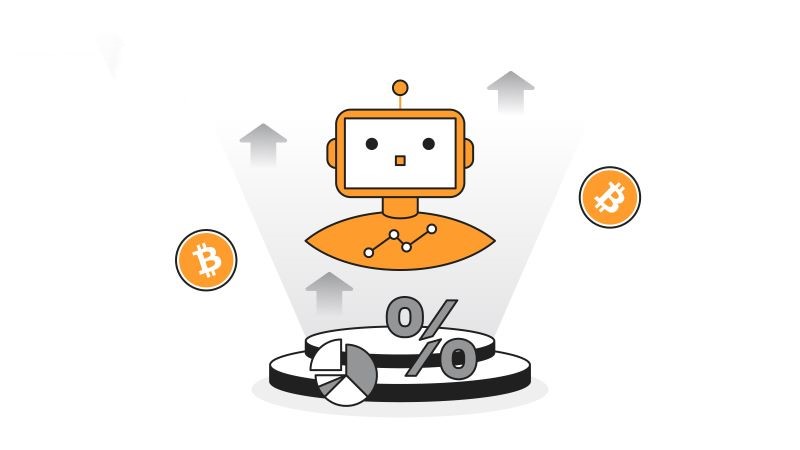Building a Python trading bot might seem daunting, but with these 10 straightforward steps, you can master the process from A to Z. Discover how to set up, program, and optimize your bot to maximize profits and save time!
10 Steps to Build a Python Trading Bot from A to Z
Building an effective Python trading bot requires investors to master the following fundamental steps:
Step 1: Set Up Your Python Development Environment
The first and most crucial step in creating a Python trading bot is to set up a suitable development environment and necessary tools. This will provide a solid foundation for starting your automated trading journey. You need to install Python and essential tools like code editors (Visual Studio Code, PyCharm, etc.) and support libraries (pip).
Step 2: Choose the Right Exchange and API
Next, for your trading bot to operate, you need to connect it to a cryptocurrency trading platform. There are many popular options available, such as Binance, Coinbase, Huobi, and FTX. Each exchange has its own advantages and disadvantages, so choosing one that fits your needs is crucial.
To help you compare, here are some important criteria:
- Trading Fees: Trading fees are one of the most critical factors to consider. Some exchanges have lower fees, while others have higher ones.
- Trading Volume: High trading volume indicates the credibility and reliability of the exchange. An exchange with high trading volume helps you execute buy and sell orders at better prices.
- Number of Coins/Tokens: An exchange with a wide range of supported coins/tokens provides more investment options.
- Security: Security is extremely important in crypto trading. You should choose an exchange with a robust security system to protect your assets.
- Interface: A user-friendly and easy-to-navigate interface helps you execute trades more efficiently.
Step 3: Install Python Support Libraries
Python offers various libraries that are essential for building a trading bot. Some of the commonly used libraries include:
- Requests: This library facilitates HTTP requests for interacting with APIs.
- Pandas: This library supports data manipulation, analysis, and tabular data creation.
- NumPy: This library provides support for matrix operations and scientific data processing.
- Scikit-learn: This library assists with machine learning and statistical analysis.
- Matplotlib: This library is used for creating charts and data visualization.
Step 4: Connect the Exchange API to Your Bot
Once you have chosen a suitable exchange, you need to obtain the API key and secret key to connect your bot with the exchange. The API key and secret key are character strings used to authenticate your bot with the exchange.
To acquire the API key and secret key, log in to your account on the exchange and navigate to the security settings section. Most exchanges provide clear instructions on how to generate API key and secret key.
After obtaining these keys, you can start connecting the exchange’s API with Python. Several Python libraries support integration with cryptocurrency exchange APIs
Step 5: Collect Real-Time Market Data
A trading bot needs to gather real-time market data to make effective trading decisions. The data to collect includes:
- Current price of the coin.
- Trading volume.
- Price charts.
- Historical data.
Python offers several libraries to support this, such as:
- yfinance: Allows you to download historical price data for stocks, indices, forex, and cryptocurrencies from Yahoo Finance.
- pandas_datareader: A useful library for accessing financial data from various sources, including Yahoo Finance, Google Finance, FRED, and more.
- Binance API: If you intend to trade on Binance, you can use the exchange’s API to fetch data directly from the platform.
Step 6: Develop an Automated Trading Strategy
This step is crucial and requires the investor to have knowledge and experience in the Crypto market. You need to define a trading strategy that aligns with your trading style and risk tolerance.
Some popular trading strategies include:
- Scalping: Short-term trading that takes advantage of small price differences over a brief period.
- Day Trading: Trading within the same day, holding positions for a short time.
- Swing Trading: Medium-term trading, holding positions from a few days to several weeks.
- Trend Following: Following market trends, buying when prices are rising and selling when prices are falling.
Step 7: Execute Buy/Sell Orders Automatically
Once your strategy is defined, the bot will automatically execute buy/sell orders based on pre-programmed conditions.
Step 8: Operate the Trading Bot
After completing the previous steps, you need to run the bot to test and monitor its effectiveness.
- Thorough Testing: Before deploying the bot in a live environment, meticulously test all aspects of the code to ensure it functions as expected. Utilize the exchange’s sandbox mode to simulate trading conditions.
- Risk Management: Implement effective risk management mechanisms to mitigate potential losses. This may include setting order limits, stop-loss, and take-profit levels.
- Continuous Monitoring: Regularly monitor the bot’s activities to ensure stable operation and avoid errors. Use monitoring and analytics tools to track the bot’s performance.
- Flexibility: Be prepared to adjust the bot’s trading strategy based on market changes and economic conditions.
Step 9: Backtesting and Optimizing Bot Performance
Backtesting involves running the bot’s trading strategy on historical data to assess its past effectiveness. To evaluate the bot’s performance, perform backtesting on historical data. This process helps identify the bot’s strengths and weaknesses and optimize parameters to enhance performance.
Step 10: Continuous Updates and Improvements
After running and backtesting the bot, you need to optimize its performance and reliability. Given the volatile nature of the Crypto market, the bot must be continuously updated and improved to adapt to changes.
Enhance Speed & Performance:
- Apply Optimization Techniques: Implement code optimization techniques to improve the bot’s execution speed.
- Prioritize Important Orders: Rank orders by priority to ensure timely execution.
- Minimize Latency: Reduce network latency to enable the bot to respond quickly to market changes.
Manage Risks and Secure the Bot:
- Risk Management: Employ effective risk management strategies to limit potential losses.
- Security: Secure the code and trading accounts to prevent cyber attacks.
- Security Updates: Regularly update libraries and security tools to protect the bot from new security threats.
Important Considerations When Using Trading Bots
When utilizing trading bots in crypto investment, it’s crucial to pay attention to several key factors to optimize effectiveness and minimize risks.
Firstly, risk management is essential. This includes setting up tools like stop-loss to limit potential losses if the market moves against your expectations, as well as diversifying your investment portfolio to avoid overexposure to a single asset. Additionally, managing the amount of capital allocated to each bot is important; avoid investing too heavily in a single bot to reduce overall risk.
In addition to risk management, choosing reputable sources of information and trustworthy communities is vital. Before committing to a bot, ensure you fully understand its operational mechanisms and trading strategies. Engaging with communities that share insights can enhance your trading skills and knowledge.
Finally, compliance with legal regulations regarding crypto trading cannot be overlooked. Always ensure that your activities adhere to the legal requirements in your jurisdiction to avoid potential legal issues.
The Future of Trading Bots in Crypto Investment
The future of trading bots in crypto investment is set to advance significantly, driven by technological progress and the growing demand for optimized trading strategies. Innovations in artificial intelligence (AI) and machine learning will make these bots increasingly intelligent, expanding their automation capabilities to cover more facets of trading. Integration with decentralized finance (DeFi) platforms will unlock new opportunities.
Trading bots will also become more user-friendly, featuring improved interfaces and flexible customization options. Security and reliability will be paramount to protect users from risks and vulnerabilities. Enhanced customer support and community engagement will ensure that users can fully leverage the capabilities of their trading bots.
Creating a Python trading bot becomes manageable with a clear, step-by-step approach. By following our 10-step guide, you can confidently build a powerful and efficient trading tool. For more advanced investment strategies and tools, visit Dynamic Crypto Network and enhance your trading skills today!






